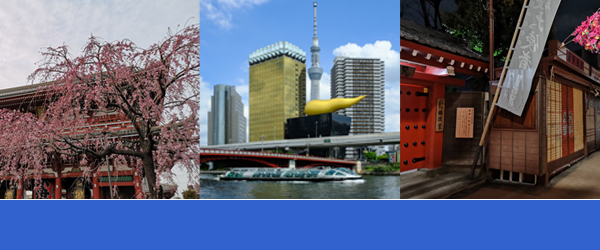Navigating the bustling streets of the city can be akin to flipping through the pages of a book of surprises. In this urban tale, let’s envision a unique scene: any given afternoon disrupted by an unexpected encounter.
As you traverse the sidewalk, a gentle movement catches your attention. You turn your head, and there it is: a cat, with an enigmatic gaze, greets you with a raised paw. The gesture is more than a mere hello; it feels like an invitation to a realm where fortune and magic intertwine. Do you approach, intrigued by the possibility that this small messenger might have something to offer? Or do you pause, marveling at the singularity of this moment?
It’s not just a fleeting instant in everyday life; it’s the beginning of a story that has echoed through time. Before ceramic Maneki-Neko adorned storefronts and shrines, there was a real cat that sparked a tradition of good fortune with a simple lift of its paw. Join us as we explore the origins of this mysterious charm, where city streets become the stage for an encounter between the ordinary and the extraordinary, and where a purr transforms into a whisper of destiny.
The legend starts with a cat born at the Gōtoku-ji temple in Setagaya Ward, Tokyo during the Edo period (1603–1868). According to temple historians, while hunting with falcons, the daimyo (regional ruler) Ii Naotaka was saved from a lightning bolt when the abbot’s pet cat Tama beckoned him into Gōtoku-ji.
Grateful to the cat for saving his life, the ruler made it a patron of the temple where it has been venerated in its very own shrine ever since.


Today the tranquil grounds of Gōtoku-ji are dotted with thousands of beckoning cat statues of varying sizes. Visitors come to see the array of white cats—commonly shaped as a Japanese bobtail, a breed that makes frequent appearances in local folklore—and pray for luck. The statues can be purchased at the temple and are usually left behind as an offering, although many take them home as a souvenir.
The “Chinese waving cat” is well-known—visually, at least. This kitsch, often gold ornament is ubiquitous in Chinatowns and Asian stores around the world, but these cute little statues aren’t Chinese at all: it’s Japanese.
Named maneki-neko in Japanese (literally “beckoning cat”), the figurine—true to its name and contrary to popular belief—is not actually waving. In Japan, unlike in Western cultures, the way to beckon someone over to you is palm forward, fingers pointing down.
With a raised paw, pointy red ears, and coins and other accessories, maneki-neko have been bringing in luck and prosperity for centuries—and while the iconic statutes have varied origin stories, they all begin in Japan.


While the Maneki-Neko’s raised paw symbolizes its beckoning gesture, the position of the paw carries additional meaning. In Japanese folklore, the right paw raised is believed to attract wealth and good fortune, making it a popular choice for businesses seeking financial success. Conversely, the left paw raised is thought to attract customers and opportunities, often seen in retail establishments.
Whatever the paw, one thing is for sure: The cats bring in good fortune. The reason for their prevalence seems to be linked to their real-life analogs. In 1602, an imperial decree set free all cats in Japan, intending to capitalize on the felines’ natural ability for pest control, especially in the sericulture community. After the decline of the silk trade, cats by extension remained as talismans for a business’s prosperity.
It’s more than simple pest control though—it’s taking care of the cat that reaps the rewards. “The importance of maneki-neko lies in its mythologized power to bring good fortune to the caretaker,” says Yoshiko Okuyama, professor of Japanese at the University of Hawaii at Hilo.
“A Japanese proverb, neko wo koroseba nanadai tataru (If you kill a cat, it will haunt your family for seven generations) is based on a folk belief that cats are revengeful and have longevity beyond human lives,” Okuyama continues. There is a deep-rooted belief in the power of cats: Look after them, and they’ll look after you.
The feline form has prowled through the tapestry of human culture, leaving its indelible mark across diverse civilizations. Exploring the significance of cats in various cultures unveils a fascinating narrative that goes beyond mere companionship, delving into realms of mythology, spirituality, and superstition.
- Ancient Egypt: Bastet and the Divine Feline

In the realm of Ancient Egypt, cats ascended to divine status through their association with Bastet, the goddess of home, fertility, and protection. Depicted with the head of a lioness or domestic cat, Bastet symbolized the nurturing and protective qualities attributed to felines. Egyptians revered cats as guardians, and harming one was considered a grave offense. Cats became cherished companions, embodying the divine connection between the earthly and the spiritual.
- Islamic Culture: Prophet Muhammad’s Compassion

Islamic culture harbors a profound appreciation for cats, stemming from the teachings of Prophet Muhammad. A famous hadith recounts the Prophet’s kindness towards a cat, emphasizing the importance of treating animals with compassion. Cats are often viewed as pure creatures, and their presence is welcomed in many Islamic households. This cultural admiration for cats reflects a broader ethos of compassion and stewardship towards all living beings.
- Norse Mythology: Freyja’s Divine Companions

In the rich tapestry of Norse mythology, the goddess Freyja stands as a symbol of love, beauty, and fertility. Freyja, associated with felines, was believed to have a chariot pulled by two large cats. These mystical creatures, sometimes portrayed as lions or lynxes, embodied grace and strength. Norse societies revered cats for their connection to Freyja, considering them as sacred companions and protectors.
- Chinese Culture: The Beckoning Power of the Waving Cat

While the Maneki-Neko is a revered symbol in Japan, Chinese culture embraces its own feline charm—Zhaocai Mao, the “Chinese waving cat.” Commonly known as the beckoning cat or lucky cat, this figurine is adorned with an upright paw motion, symbolizing the beckoning of wealth and prosperity. Found in homes and businesses, the waving cat is a popular symbol, believed to attract positive energy and financial success.
- Western Superstitions: Black Cats and the Dance of Luck

In Western cultures, black cats have danced on the fringes of superstition, embodying both good and bad omens. While some see them as symbols of bad luck, others, particularly in Scottish folklore, consider their arrival a harbinger of prosperity. The superstitions surrounding black cats highlight the cultural duality of feline symbolism in the Western world, where these creatures are both feared and revered.
The global tapestry of feline symbolism weaves a rich narrative, each culture contributing a unique chapter to the story of these enigmatic creatures. From divine guardians in Ancient Egypt to symbols of luck and prosperity in China, cats transcend mere pets, becoming living embodiments of cultural beliefs, values, and traditions.








